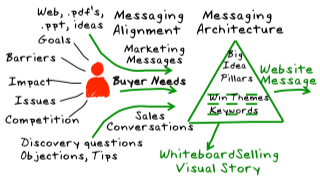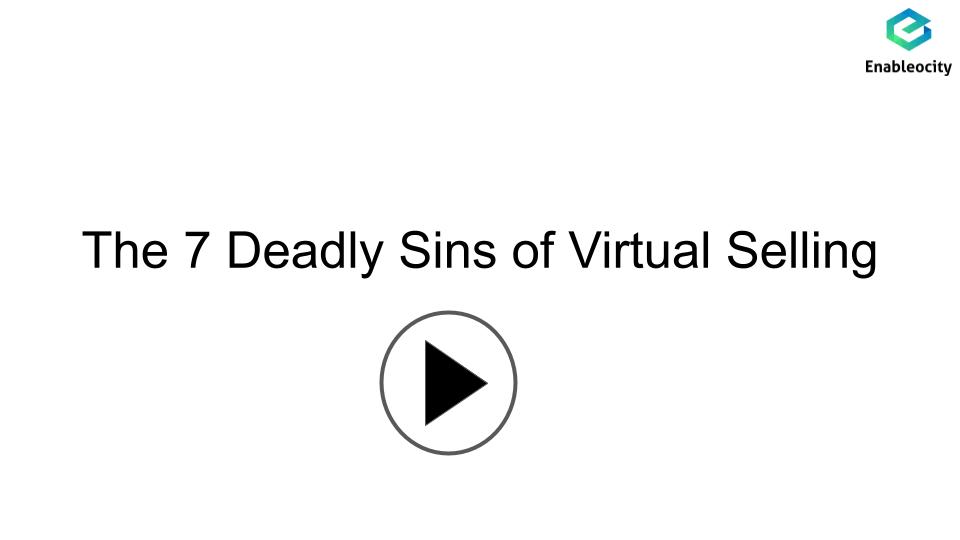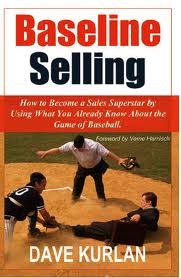The marketing messaging used in Websites and Blogs to drive Inbound Marketing leads, must be used to drive sales conversations with the gamut of prospects and customers, without salespeople having to translate it or figure it out themselves. 
Rules for Inbound Marketing Messaging:
For a B2B Internet Site to be effective, there is more work required than simply selecting and optimizing keywords. Effective Website messaging and blogposts have the following characteristics
- Crafted around the needs of target-buyer-persona
- Illustrate how existing customers use your products and services to solve problems
- Products/services are described around how capabilities are used to solve business problems (features and benefits are dead, stop using these terms!)
- Integrate keywords and phrases into the body of the message
- Appropriate keyphrase tags are included in all blog posts
- Keywords used in the H1, H2, headings for the passage
- Keywords incorporated into the hyperlinks that make literal sense
If we have been successful in our Inbound Marketing and Blogging efforts and are attracting inbound leads, buyers will manifest their needs in the following ways;
The Value-Offered or transactional buyer
Buyer: "I just need a widget, I have a fixed budget and need to get started next week."
The Value-Added buyer requiring help to implement what they need.
Buyer: "We are looking for alternatives to our current in-house system and would like to meet with your team to understand your approach".
The Value-Created sale to an early adopter who has an idea, but needs help to assess the risks and to develop a solution.
In the Value-created sale, the buyer has a number of goals to achieve. There are many ways to solve the problem; the salesperson assumes the role of the consultant and creates an opportunity for a high value, mutually rewarding engagement. This type of engagement is typically discovered by sales professionals looking for opportunities to grow footprint in existing accounts, or carefully uncovered in consultative conversation as a result of an inbound inquiry.
The same messages used on the Website and in Blogs to drive Inbound Marketing must be used to drive sales conversations with prospects and customers; sales people should not have to translate the message to connect with buyers, either on the phone or in person.
Rules for Effective Sales Messaging
- Must incorporate buyer persona,
- Must incorporate appropriate best-practice diagnostic questions,
- Must relate how capabilities are used to solve business problems relevant to the buyer role
- Must include proof points that are relevant to the buyer persona,
- Must be built for purpose, based on buyer behaviour, i.e. the Message required to support value-created (consultative) conversations is different to that of a value-offered (transactional) conversation.
- Must enhance sales productivity i.e. sales people will want to use the messaging until they have integrated it and use it unconsciously.
Conducting a Sales and Marketing Messaging Alignment exercise is a pre-requisite for effective inbound marketing and in creating one vocabulary for the organization that is used by sales, marketing, pre-sales and support teams.
Also strongly recommend you read "Why Killer Products don't Sell", by Dominic Rowsell and Ian Gotts for more understanding on how people buy and why the need for different messaging tools.



